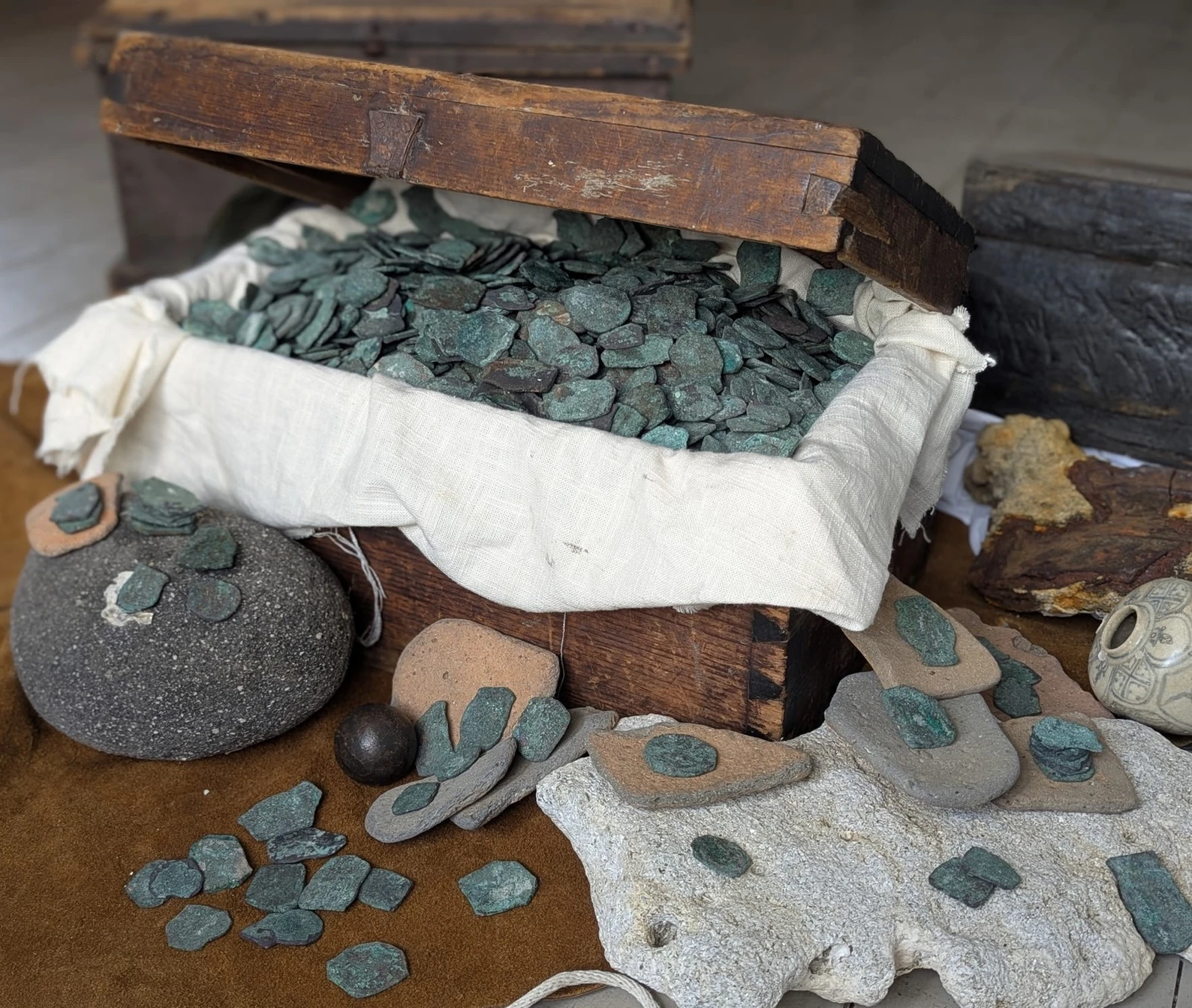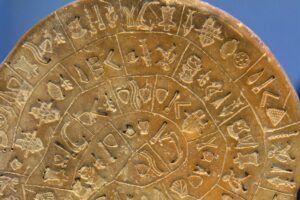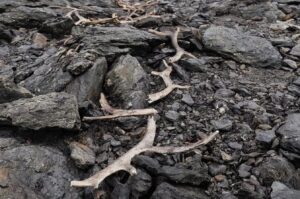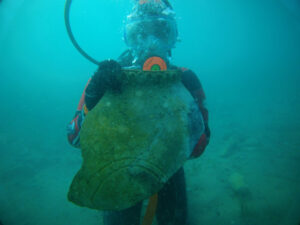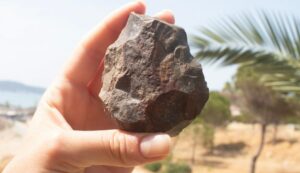In 1715, a violent hurricane off the Florida coast tore eleven Spanish ships to pieces and drowned most of their crew. That was only the start of the drama. Now, after the waterlogged ruins of the fleet have inspired piracy, arson, and archaeological theft, one of the shipwrecks has surrendered more treasure — over $1 million in 18th-century coins.
So many rotting Spanish hulls litter the seabed off the central Floridian coast that this stretch of shoreline is called the Treasure Coast. This summer, a salvage company recovered over a thousand coins and other artifacts. “Every find helps piece together the human story of the 1715 fleet,” said director of operations Sal Guttuso.
It’s not just the monetary value of such a haul but also the historical significance that enraptures the hodgepodge of treasure hunters and amateur historians who obsess over the 1715 Fleet. The new discoveries will soon circulate in Florida museums, but in the meantime, many tantalizing questions remain unanswered. Where did they find the haul? Which ship, in particular, yielded the horde?
The comeback fleet
The Fleet of 1715 was intended to restore the Spanish Empire to its former glory. After half a century of economic mishaps and a decade of brutal war, Spain’s once-regular deliveries of silver bullion had dwindled and then stopped entirely.
But from the get-go, mishaps plagued the project. Its commander, Juan Esteban de Ubilla, arrived in the Mexican port city of Veracruz in 1712. Ingots had been collected, coins minted, and ships refurbished. He was raring to go. But the year came and went, and no orders came. The Spanish Crown was engaged in complex peace negotiations and wanted Ubilla to hold off until the new world order set in.
Ubilla spent the next three years engaged in a series of first venomous, then sycophantic letters to his commanding officer in Mexico City. Both he and the fleet’s sailors waited at Veracruz, wanting both in entertainment and back pay. In fact, the only thing of note that appears to have happened to Ubilla during this time was an unspecified “accident with his sword” that left him unable to travel for a time. (For a fascinating and often hilarious account of Ubilla’s three-year bureaucratic nightmare, see this article.)
But on July 31, 1715, the Fleet did finally set sail — straight into a hurricane, which sank eleven of its twelve ships and killed over a thousand men, including the unfortunate Ubilla.
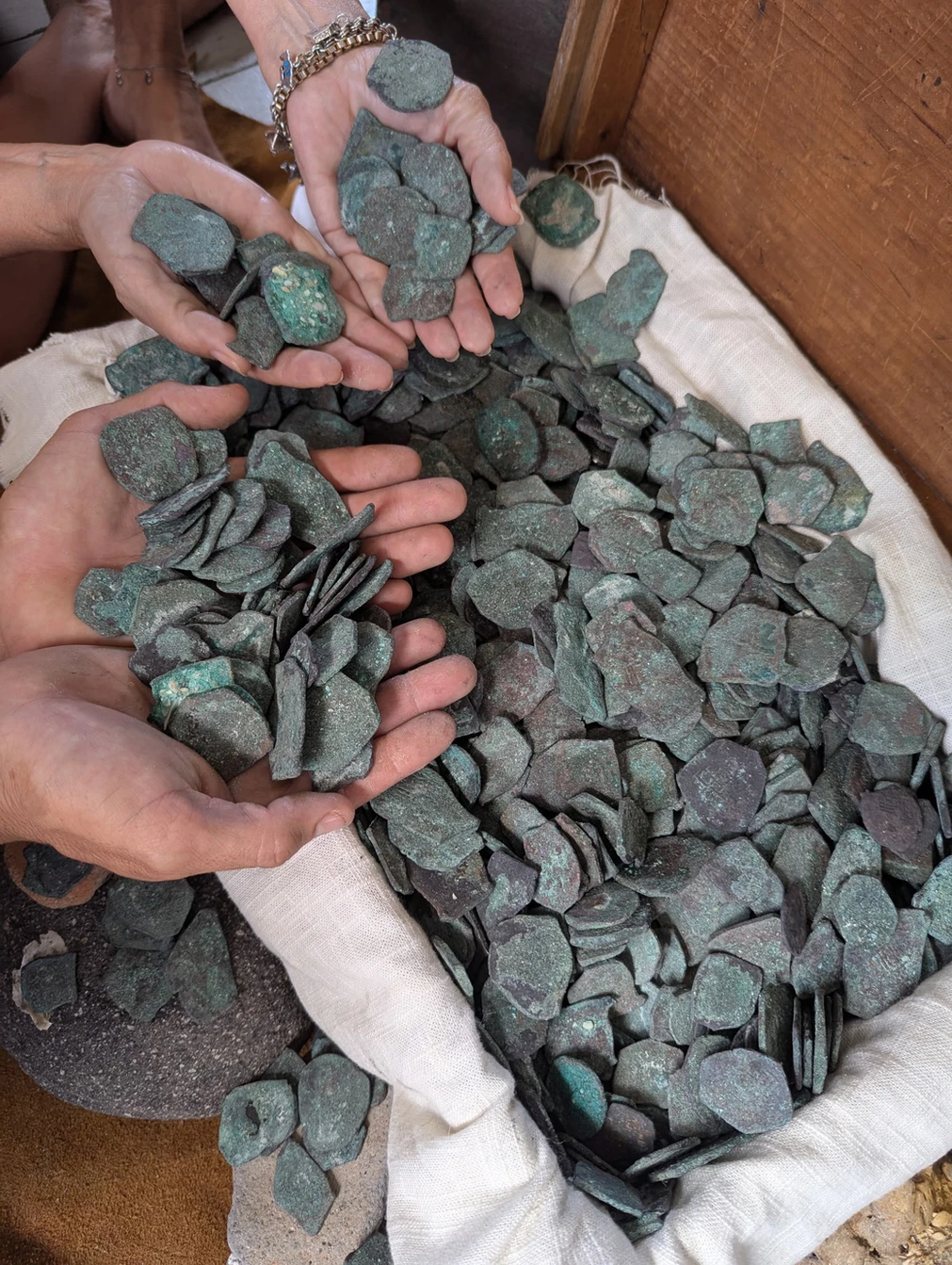
The 1715 Fleet transported an estimated $400 million (in modern valuation) of coins such as these silver pieces of eight, recovered this summer. Photo: Queens Jewels
Real-life Treasure Island
Eleven ships loaded with treasure, sunk in shallow Caribbean waters? The race was on to find them.
The Spanish had a head start. The largest ship in the Fleet, the Urca de Lima, floundered on a sandbank off the coast of Fort Pierce, Florida. The survivors evacuated the precious cargo to a salvage camp on the beach. Then they set the beached ship on fire to hide it from passing ships. Their captain hopped aboard a Spanish mail ship to carry news of the wreck to the Crown.
Unfortunately for Spain, word of the disaster had spread among nearby pirates. Charles Vane and Henry Jennings wasted no time fishing around the coastline for visible shipwrecks. Instead, they captured the mail ship and exhorted the captain of the Urca de Lima to give up the exact location. He did so.
Vane, Jennings, and their crew paid the survivors at the salvage camp a highly armed visit. Resistance was out of the question. They surrendered the modern equivalent of $23 million to Vane and Jennings.
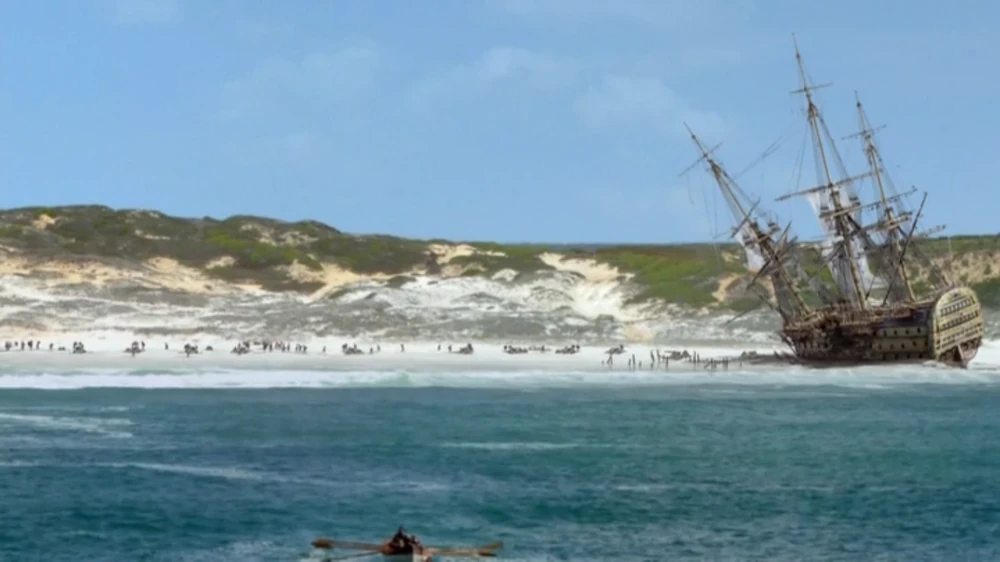
The wreck of the Urca de Lima as depicted in period pirate drama Black Sails. The actual wreck occurred in shallow water, not on a beach. Photo: Starz
Underwater art thieves
In 1932, the state of Florida authorized underwater excavations of a shipwreck they believed to be the Urca de Lima. Other wrecks followed, scattered along the Florida coastline. Exactly which ship became which wreck remains a hot topic of discussion among aficionados of the 1715 Fleet. Unspoken: the implication that the wrecks found so far may not even be the most exciting ships of the fleet.
Given the allure of the treasure ships, along with their historical importance, the government of Florida allows only one company at a time to excavate them. For the past decade, the lucky company has been Queens Jewels LLC. By law, Queens Jewels must donate up to 20 percent of each salvage haul to Florida museums.
While the ships themselves have mostly deteriorated in the warm Floridian water, artifacts remain buried beneath 300 years of sand. These artifacts include the silver coins known as pieces of eight and a variety of rarer gold coins. They’re archaeological treasures — and fetch a hefty price on the underground art market.
Queens Jewels has respected its donation requirements. But the temptation of making an extra million dollars or so proved too much for one of its subcontractor companies, a family of treasure hunters operating under the colorful name Booty Salvage. The family stole half of what they recovered from a 2015 dive before turning the rest over to Queens Jewels, according to one of the family’s own members, Eric Schmitt, who was haunted by the theft.
A year after the crime, he dove back to the wreck and placed three of the coins in the sand. Then he sat on the secret.
That is, until last year, when Eric Schmitt texted the founder of Queens Jewels. Over a series of 36 messages, he confessed to the charade. Perhaps by this point, the stolen coins seemed trivial: He sent the texts from a jailhouse, following his arrest for assault with a deadly weapon.
Federal authorities have spent the past year tracking down as many of the stolen coins as they can.
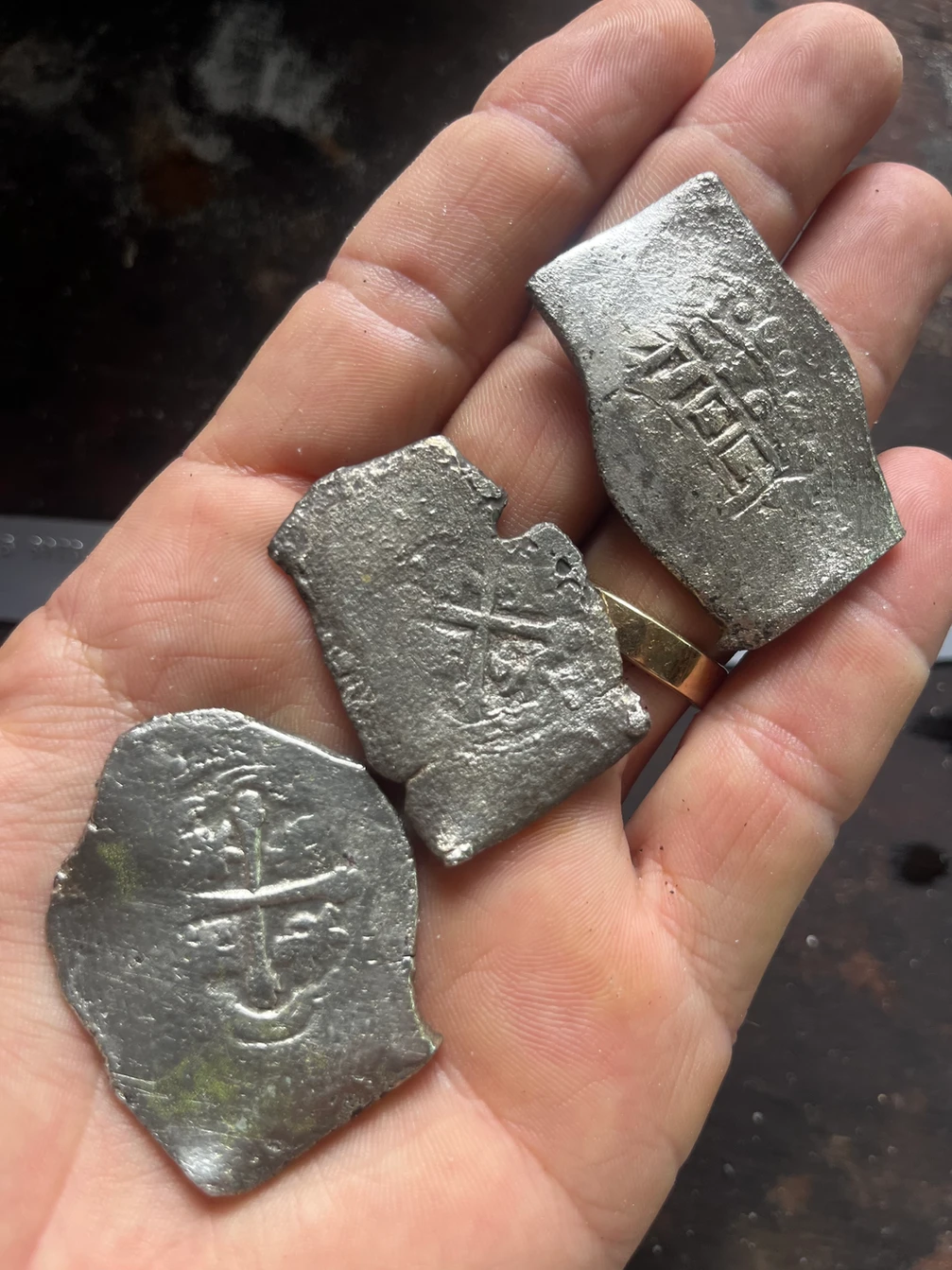
Many of the coins in the recent haul carried mint markings, increasing their value as both historical objects and collectors’ items. Photo: Queens Jewels
The new find
After all this drama, Queens Jewels is back in the headlines. This time, it’s with a success story. Divers directed by Captain Levin Shavers have recovered over a thousand artifacts from a 1715 Fleet wreck, valued at $1 million. This haul includes pieces of eight, gold escudos, and other unspecified gold pieces.
Queens Jewels has yet to release the details of the excavation. We do not yet know its location, nor do we know whether any of the artifacts bear clues to the identity of the ship. But the company is already liaising with local museums to restore and display some of the recovered pieces, which are fragile after 300 years of immersion in saltwater.
“Each coin is a piece of history, a tangible link to the people who lived, worked, and sailed during the Golden Age of the Spanish Empire,” Guttuso commented in Queens Jewels’ press release. “Finding 1,000 of them in a single recovery is both rare and extraordinary.”
This does not mark the end of Queens Jewels’ search for the 1715 Fleet shipwrecks. With only a handful of wrecks discovered, the secrets of July 31, 1715, remain a treasure for the future.
